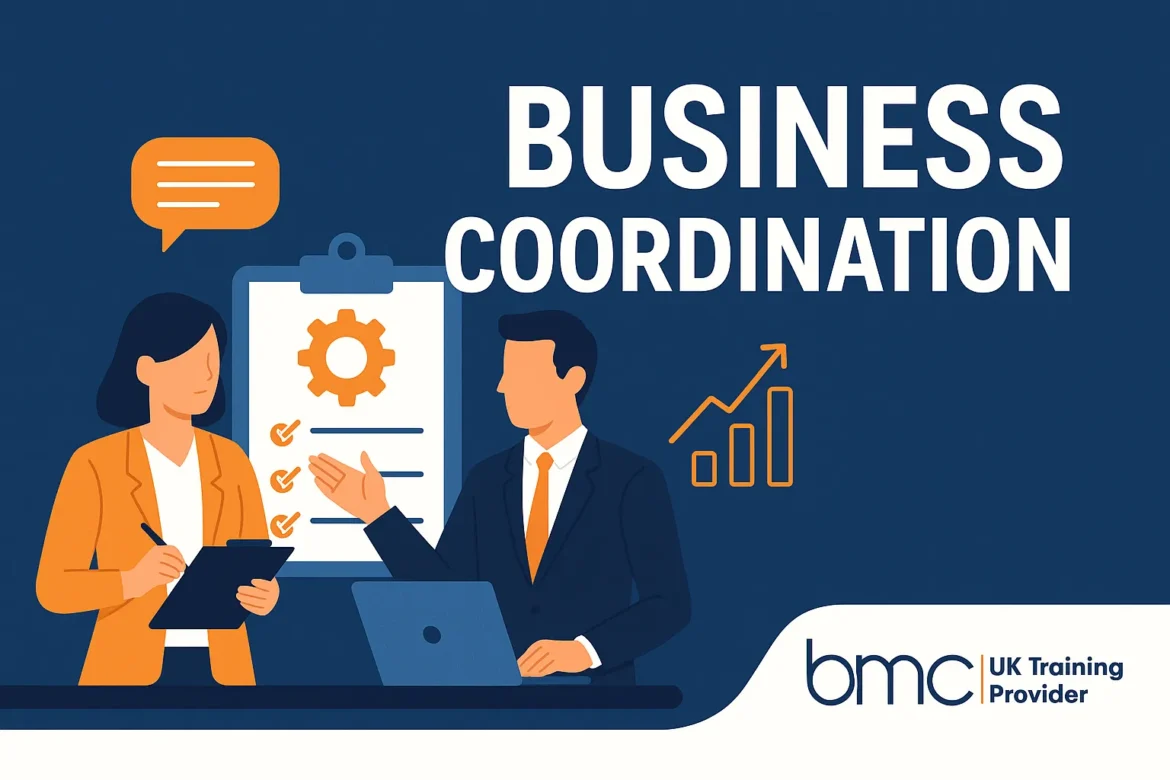Stop Working in Silos: Why Effective Coordination is the Core of Modern Management
Are your projects constantly hitting unexpected roadblocks? Do departments operate in isolation, leading to wasted effort and missed deadlines? In today’s complex corporate environment, the ability to harmonize diverse activities is not a luxury—it’s a fundamental requirement. Business coordination is the strategic process that ensures all parts of the organization work together seamlessly to achieve a common goal.
This in-depth guide is designed for management trainees and aspiring leaders, offering a structured approach to understanding, implementing, and mastering the principles of business coordination to drive efficiency, enhance productivity, and achieve sustainable growth.
What is Business Coordination? Defining the Strategic Link
Business coordination is the deliberate and synchronized effort to integrate the activities of different business units, teams, or individuals to ensure they contribute cohesively towards an organization’s objectives. It is the managerial function that links planning, organizing, staffing, directing, and controlling.
Coordination vs. Cooperation: A Critical Distinction
Read Also : Ace Your Next Promotion: Essential Questions for a Supervisor Interview
The Three Dimensions of Coordination
- Vertical Coordination: Linking activities between different levels of management (e.g., General Manager and Department Head).
- Horizontal Coordination: Linking activities between departments at the same organizational level (e.g., Marketing and Product Development).
- Diagonal Coordination: Linking activities between different levels and different departments (e.g., HR and a specific Project Team).
Why is Business Coordination Essential? The Key Benefits
The value of robust business coordination extends far beyond just meeting deadlines; it fundamentally affects profitability and competitive advantage.
Driving Synergy and Reducing Friction
- Avoids Overlapping and Duplication: By clearly defining roles and workflows, coordination prevents two teams from performing the same task, saving time and resources.
- Optimal Resource Utilization: Ensures that capital, human resources, and technology are allocated precisely where and when they are needed most, reducing waste.
- Conflict Resolution: Establishing clear coordination mechanisms acts as a proactive tool to minimize inter-departmental conflicts arising from ambiguity.
- Achieving Specialization: Allows departments to focus on their core competency while trusting that their output will be correctly integrated downstream.
Read Also : What is a Chief Management Officer (CMO)? Your Definitive Guide
Experience (E-E-A-T Focus): A Real-World Example
Consider a software company launching a new product. Without proper coordination, the Marketing team might launch a campaign based on features that the Product Development team hasn’t finalized yet. This coordination failure leads to misaligned customer expectations, wasted marketing spend, and product delays. Effective coordination, facilitated by a Project Management Office (PMO) and clear milestones, ensures the campaign launch is perfectly timed with the product release, maximizing market impact.

How to Achieve Effective Business Coordination
Effective coordination is not automatic; it requires specific managerial techniques, tools, and a deliberate organizational structure .
1. Structural and Procedural Methods
2. Communication and Leadership Methods
- Establish Superordinate Goals: Define goals that require the cooperation of multiple departments, fostering a “we are in this together” mentality.
- Cross-Functional Teams: Create temporary or permanent teams with members from R&D, Marketing, Finance, and Operations to work on shared projects.
- Frequent, Structured Communication: Implement daily stand-up meetings, weekly sync-ups, and transparent status dashboards to keep everyone informed in real-time.
- Leadership Role: The General Manager or Project Lead must champion coordination, rewarding collaborative behavior and penalizing silo mentalities.
Read Also : Understanding the Core Functions of an Assistant Manager: A Guide to Leadership and Support
When to Coordinate: Recognizing the Critical Moments
While coordination should be continuous, there are specific organizational situations that elevate its necessity
- During Organizational Change: Mergers, acquisitions, or restructuring efforts require intense coordination to align new processes, cultures, and reporting lines.
- Complex Projects: Initiatives involving multiple stakeholders, high costs, and tight deadlines (e.g., digital transformation, new facility launch).
- High Interdependence: In environments where the output of one department is the direct input for another (e.g., manufacturing assembly line).
- Crisis Management: During an external crisis (e.g., supply chain disruption), coordination among operations, legal, and communications departments is vital for a unified response.
FAQs: Mastering the Coordination Mindset
These answers are built on common managerial queries regarding the coordination process.
Q1: Is Business Coordination the same as Control?
A: No, they are distinct but related. Coordination is the act of integrating activities to prevent conflict and ensure harmony. Control is the act of measuring performance against standards and taking corrective action. Coordination facilitates control.
Q2: Can too much coordination be harmful?
A: Yes. Excessive, over-detailed coordination can lead to micromanagement, slow down decision-making, and create unnecessary bureaucratic overhead. The key is to find the optimal level of coordination needed for the complexity of the task (Contingency Approach).
Q3: Which organizational structure supports coordination best?
A: The Matrix Structure is often cited as being highly effective for coordination, as it formally recognizes both functional (vertical) and project-based (horizontal) reporting lines, forcing managers to coordinate resources and goals constantly.
Q4: What is a Coordination Gap?
A: A coordination gap occurs when there is a breakdown in the flow of information or resources between two interdependent parties, resulting in project delays, quality issues, or rework. It is a sign of a flawed communication or structural mechanism.
Read Also : Unlocking Strategic Clarity: The Power of Composite Risk Assessment
Your Next Step: From Managerial Trainee to Coordination Master
Business coordination is the silent skill that separates adequate managers from exceptional leaders. By understanding its principles and applying the right structural and communication tools, you can transform disconnected efforts into a unified, high-performance engine. Mastering coordination is mastering the art of management itself.
About BMC Training
BMC Training is a premier provider of comprehensive management and leadership courses designed to equip professionals with the skills needed to thrive in the modern business landscape. We specialize in developing managerial skills, leadership styles, and strategic thinking, offering industry-recognized certification across vital disciplines like Project Management, Business Strategy, and Organizational Behavior. What sets us apart is our focus on practical, real-world application, expert-led instruction, and a curriculum built on the latest global best practices to ensure your success.
Ready to gain the certified expertise needed to lead and coordinate complex business initiatives?
Discover our certified Management and Leadership Courses for 2025 and 2026 and register today!
Read Also : The Indispensable Role: Complete Guide to the Responsibilities of an Assistant Manager


